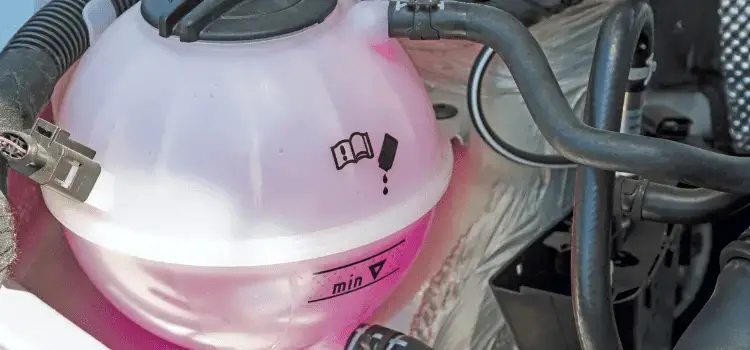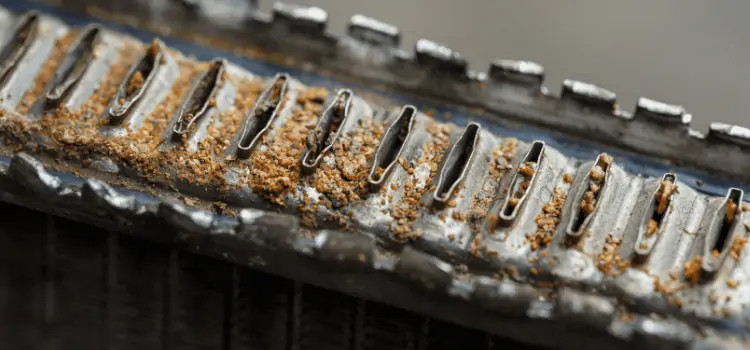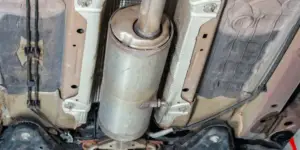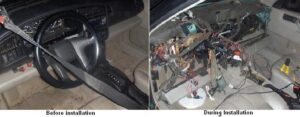Coolant or antifreeze is a chemical liquid. It circulates through your radiator via a water pump to cool your vehicle’s engine. It also helps to prevent the liquid inside your radiator and engine from freezing in the winter.
There are times when coolant is unavailable, either because of a leak or general evaporation, and people need to know whether water can be used solely to top up.
Before we go into detail,
Water can be used solely if the need to drive is urgent. However, it increases the risk of corrosion in the cooling system and the risk of the engine overheating or freezing. Coolant should be added as soon as possible.
Let’s look at the science of coolant in a little more detail.
Coolant (as we’ll call it for the rest of our discussion) comes in different chemical compositions and concentrations. This must be mixed with water in specific quantities to work effectively in your car’s cooling system.
The coolant increases the boiling temperature of the water so that it can withstand the high temperatures of the engine. It also acts as an anti-corrosive by preventing residue buildup within the radiator, pump, and engine.

Coolant is available in a variety of different, bright colors, -each slightly different – and is an essential part of your cooling system. It’s often overlooked, and drivers tend to use water instead – much more common than you’d think.
Here we’ll look at why that’s bad practice and some situations where it might be necessary.
Problems Of Using Water Instead of Coolant
The high temperature and pressure in the cooling circuit require a liquid with a broad operating temperature range.
This is best provided by the recommended mixture of coolant with water.
Using plain water can mean decreased cooling in your engine.
- Since plain water does not have the broad temperature range of a solution, it will heat more easily and eventually evaporate, leaving you with having to refill the radiator more often. This could also damage your engine since the water is more likely to overheat.
- Coolant also possesses anti-corrosive properties. Ideally, the water you mix with the coolant is distilled (premixed ones contain distilled water). If, however, you use plain or tap water instead, you risk corroding the insides of your radiator. This is because plain water consists of minerals that will react with the metal in your radiator and cause it to rust faster.
- This leads to the third problem: residue buildup in your radiator. The rust produced by the water reacting with the metal can become deposited throughout the radiator hoses and cause corrosion. If left unchecked, it can even lead to a clogged radiator.

- Antifreeze/coolant prevents liquid from freezing inside the radiator in colder climates. Plain water will not have such broad operating temperatures and will freeze inside when the car’s not in use or at night when temperatures drop.
- Some newer car models come with an automatic shutdown system that shuts off the engine when engine temperatures run too high; Using water instead of coolant can usually cause higher temperatures, so a sudden shutting off of the engine can be an additional problem (you also can’t start a car with such a system until temperatures drop back down).
Can I Use Water Instead of Coolant In An Emergency?
It’s a bad idea to use water instead of coolant.
Despite that, you may find yourself in situations where you’re left with few options. For example, if you’re remote and don’t have access to repair/refill services, it’s better to use water than to drive with a half-empty radiator.
If you’ve experienced a coolant leak and have to head to a mechanic some ways off, it’s okay to fill up on water that will last the trip.
Get the coolant system flushed through as soon as possible to remove all the water and fill it up with coolant. It’s a false economy to leave water in the system, however tempting it might be.
Tips On Adding Coolant To Your Radiator
Here are some things to remember when adding regular coolant to your car (as well as plain water).

- Open the hood and check whether the radiator and coolant reservoir has cooled. Opening the cap when hot can burn your hand through steam or hot water. Place a thick, wet cloth or towel on the cap before opening – as a safety precaution.
- Mix your coolant (not required if it comes premixed) with water by filling half the overflow tank with distilled water and the rest with coolant. A 50/50 ratio is known to be the most efficient. The tank should gradually pour back the mix into the radiator.
- Start the engine and listen for any unusual sounds. Also, check whether the cooling fan and temperature sensor are functioning properly. Make sure the coolant is circulating. Coolant Not Circulating – Causes and Fixes
- Next, check the radiator’s hoses for leaks. You should also check the bottom of the car for any fluid dripping down. Also, if you need a coolant refill too quickly, there might be an internal leak in the hoses, which you should check. Low Coolant Symptoms – Full List of 12
- Dispose of old coolant properly since it is highly toxic to humans, animals, and plants. Do not throw it down the drain, and do not pour it on the ground. Take it to a nearby gas station or automotive shop to handle it properly.
In conclusion
Theoretically, you may put normal water in your coolant circuit, but it isn’t advised as a long-term fix and not in severely cold weather. Water freezes at 0°C, which is why putting water in your car coolant system can cause leaks when the water freezes.
- Water is okay to use as a temporary backup.
- Try and use distilled water rather than tap water.
- Add coolant as soon as you get a chance to buy some
- Coolant does lose its effectiveness over time so drain the system in line with manufacturers’ guidelines













